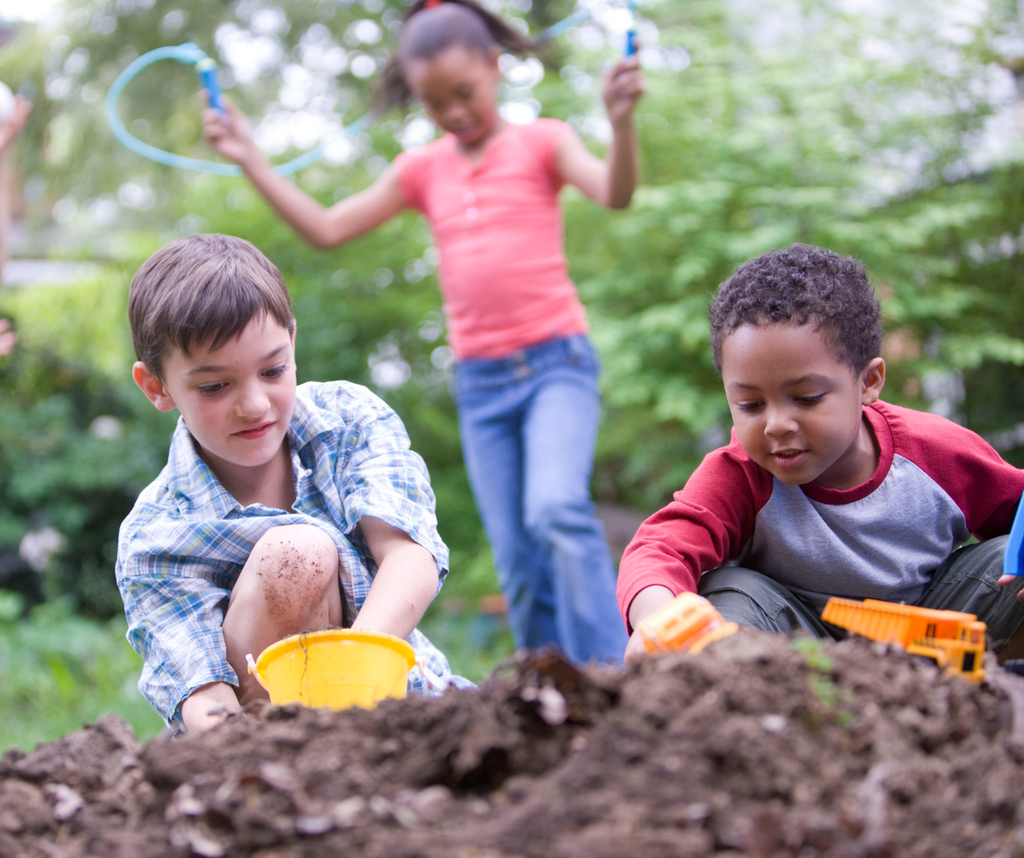Are you getting dirty enough? Experts say it can improve health

Scientists have long known that a little dirt can be good for you. Research has suggested that people who grow up on farms, for instance, have lower rates of Crohn’s disease, asthma and allergies, probably because of their exposure to a diverse array of microbes.
In the 1970s, scientists even found a soil-dwelling bacterium called mycobacterium vaccae that had an anti-inflammatory effect on our brains, possibly both lowering stress and improving our immune response to it.
More recently, there’s been an explosion of interest in the human microbiome, with people taking probiotics, seeking food with live cultures and “rewilding” their microflora. At the same time, scientists have been discovering how broad a role dirt microbes can play in our mental and physical health.
When we’re touching soil or even just out in nature, “we’re breathing in a tremendous amount of microbial diversity,” says Christopher A Lowry, a professor of integrative physiology at the University of Colorado Boulder.
A recent Finnish experiment found that children attending urban day cares where a native “forest floor” had been planted had both a stronger immune system and a healthier microbiome than those attending day cares with gravel yards – and continued to have beneficial gut and skin bacteria two years later.
It’s not just good for kids; adults can also benefit from exposure to soil-dwelling microbes, Lowry says. So before winter hits, make a little time to go outside and get grimy.
Embrace the dirt while you move
Activities such as mountain biking, camping and bushwalking are easy ways to come into contact with a diverse microbial ecosystem, Lowry says. “I think we underestimate how much exposure we get from simply being outside.”
Or you could try a little forest-bathing — a mindful, sensory way to walk in nature — and scoop up a handful of dirt.
“Spend some time looking at it and inhaling the aromas,” says Amos Clifford, the founder of the Association of Nature and Forest Therapy Guides and Programs and the author of Your Guide to Forest Bathing. “Sift it through your fingers, then bring your hands to your face.” If Clifford comes across a stream as he’s guiding a walk, he invites people to take off their shoes and step into the “mushy, muddy bottom,” feeling the textures.
If getting your hands and feet dirty isn’t enough, find a local mud run, where participants race through muck and tackle obstacles along the way.
Plant or pick something
Gardening has long been associated with reduced depression, anxiety and stress, and it calls for plenty of time spent working in the dirt.
When people ask him how to get started, Leigh Johnstone, a gardener and mental health advocate in Southampton, England, who goes by “The Beardy Gardener” to his 21,000 Instagram followers, asks them one question: “Well, what do you like to eat?”
Tomatoes are one of the easiest things to grow, says Johnstone, because they need very little maintenance and can be planted in a pot or hanging basket on a balcony. He also suggested strawberries and herbs such as basil, mint or chives.
Or create a habitat garden, which uses native plants to attract and feed wildlife, says Mary Phillips, who leads gardening habitat programs for the US National Wildlife Federation.
Do like the kids do
Jill Dreves, the founder of Wild Bear Nature Centre in Nederland, Colorado, has a simple recipe for getting dirty: make a mud pie.
She suggested throwing something similar to a sip and paint event: ask everyone to bring an old cake pan and get creative with mud.
“Bring out some rocks and beads to press into them, collect some pretty leaves, press your hands or feet in,” says Dreves, who has organised mud pie parties with her staff. “We save that kind of thing for little kids, but really, as adults, we need to be doing more of it.”
If you have actual kids to entertain, build a fairy garden, Yurich says. Gather leaves and moss to create a miniature, magical landscape, using sticks to construct huts, bark for the floor and stones for seating.
Johnstone and his two-year-old daughter like making bug hotels, which encourage insects to shelter inside. They also make seed bombs, which you can assemble any time of year, then store until spring or autumn to throw around the yard, Johnstone says.
“A lot of people still have this nervousness around touching soil,” he says. But for him, “it makes me happy”.

Leave a comment